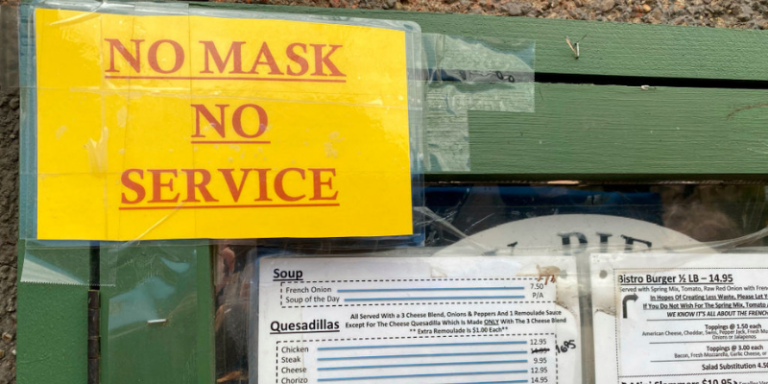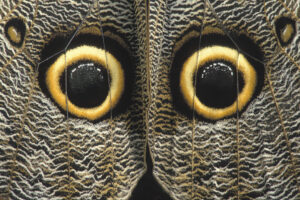The Spill: Rule Makers and Rule Breakers
Weekly news you can use.
By: GenZ Staff | September 12, 2020 | 862 Words

COVID-19 coronavirus rules (Photo by Lindsey NicholsonEducation ImagesUniversal Images Group via Getty Images)
Rules for Thee but not for Me
The COVID-19 pandemic has certainly changed our way of life. It’s hard to know what to do, so we turn to our national and local leaders for direction. But what happens when those very officials don’t even follow the rules they came up with?
Recently, House Speaker Nancy Pelosi (D-CA) was in the news after going to a beauty salon for a hair appointment. Not only were salons not allowed to have indoor appointments yet, the speaker was not wearing a mask. To make matters worse, Pelosi then accused the salon of setting her up and said the owner should offer her an apology. Protesters argue that the House Speaker – who is responsible for a lot of the nation’s shutdown regulations – should have been aware of the laws in her own jurisdiction.
 New York City’s mayor, Bill de Blasio, and the state’s governor, Andrew Cuomo, have been caught repeatedly not wearing masks while simultaneously blaming the president for the spread of Coronavirus. In fact, de Blasio was caught attending a gym before they were allowed to be open. When confronted about the double standard, he said, “I need exercise to be able to stay healthy and make decisions.”
New York City’s mayor, Bill de Blasio, and the state’s governor, Andrew Cuomo, have been caught repeatedly not wearing masks while simultaneously blaming the president for the spread of Coronavirus. In fact, de Blasio was caught attending a gym before they were allowed to be open. When confronted about the double standard, he said, “I need exercise to be able to stay healthy and make decisions.”
The “practice what you preach” approach doesn’t seem to carry much weight with government officials. They should be setting an example for their citizens. Those citizens are now wondering why we have these regulations in place at all if these people who are “in the know” don’t feel mask-wearing is necessary for their own health and safety?
The Cows Have Eyes
Have you heard the saying that someone must have eyes in the back of their head? Well, how about cows with eyes on the back of their bottoms? You may laugh, because it does seem like a silly idea, but nevertheless researchers and farmers came up with an idea to paint eyes on cow butts to help reduce herds from losing members to predators.

Giant owl butterfly (Photo by Wild Horizons/Universal Images Group via Getty Images)
Researcher Neil Jordan, who is a study co-author from the University of New South Wales in Sydney, Australia, explained the reasoning for painting eyeballs on the rear ends of cattle. “Lions are ambush predators that rely on stalking, and therefore the element of surprise,” he said, “so being seen by their prey can lead to them abandoning the hunt.” The study showed that cows with eyes painted on their rumps were much more likely to survive when lions attacked the herd.
For some of nature’s creatures, this technique is nothing new. There are other species that are born with features resembling eyes on their bodies such as butterflies, birds, and fish. However, mammals do not produce such a protection and humans are now finding that painting eyeballs on the backsides of vulnerable herds may go a long way towards discouraging predators from attacking. It’s taken a while for humans to adopt the practice to save livestock, but at least some cows are thankful today that they have eyeballs painted on their behinds.
Screen Time or Green Time?
Do you prefer “screen time” or “green time”? Do you know the difference? If you prefer to watch television and play videos, then you are a screen time person. But if you prefer to be outdoors, playing sports or hiking, then you are a green time individual. There are pros and cons of both, but as with anything, too much of either may not be good for you.
Screen Time
According to researchers, kids in the United States average about seven-and-a-half hours a day in screen time – and this is before the Coronavirus pandemic. Ph.D. candidate Tassia Oswald from the University of Adelaide in Australia said that “The overwhelming majority [of studies] found that there was an association between increased screen time and unfavorable psychological outcomes” which vary depending on the age groups. “Excessive screen time for young children under five years was more often associated with poor cognitive outcomes,” she continued. “That makes sense because at that age they’re developing cognitive abilities like language.” For adolescents, she suggested “there was more association between mental health outcomes like depression and anxiety.”
Green Time
Spending time out doors among the “green” nature is believed to be healthy both physically and mentally. Chances are if you’re outside, then you are getting some kind of exercise by playing sports or just going for a walk. The sedentary lifestyle of sitting in front of a screen doesn’t allow for much physical activity. Exercise increases endorphins in the brain, which helps to stimulate brain activity and has been linked to helping with depression and a myriad of other conditions.
The challenge with kids being able to have green time, however, has become real over the past couple of decades as parents are concerned with their children’s safety. There is also the issue of finding enough space to play outdoors as the population grows and free roaming areas are being turned into apartment buildings and other structures.

















